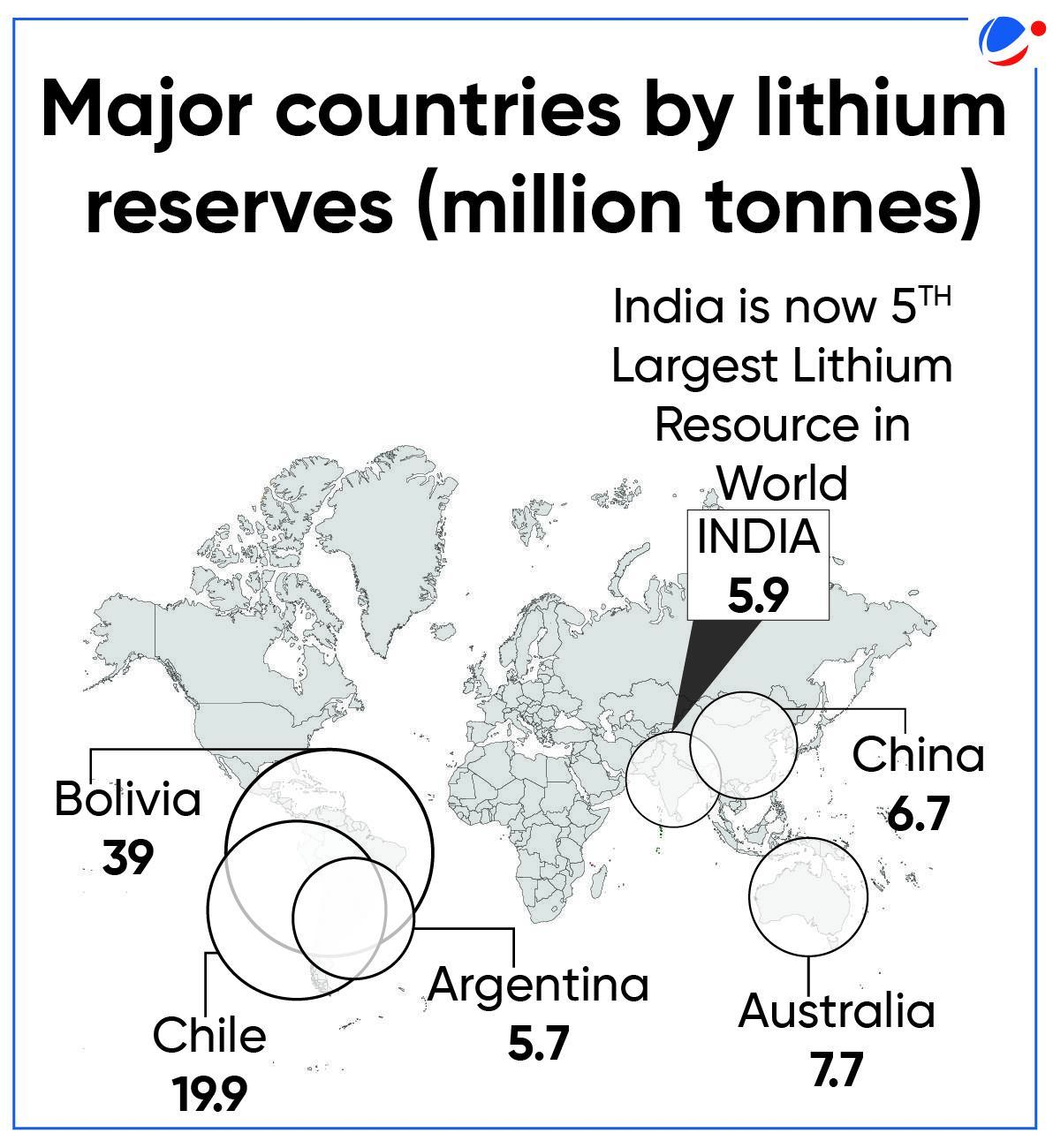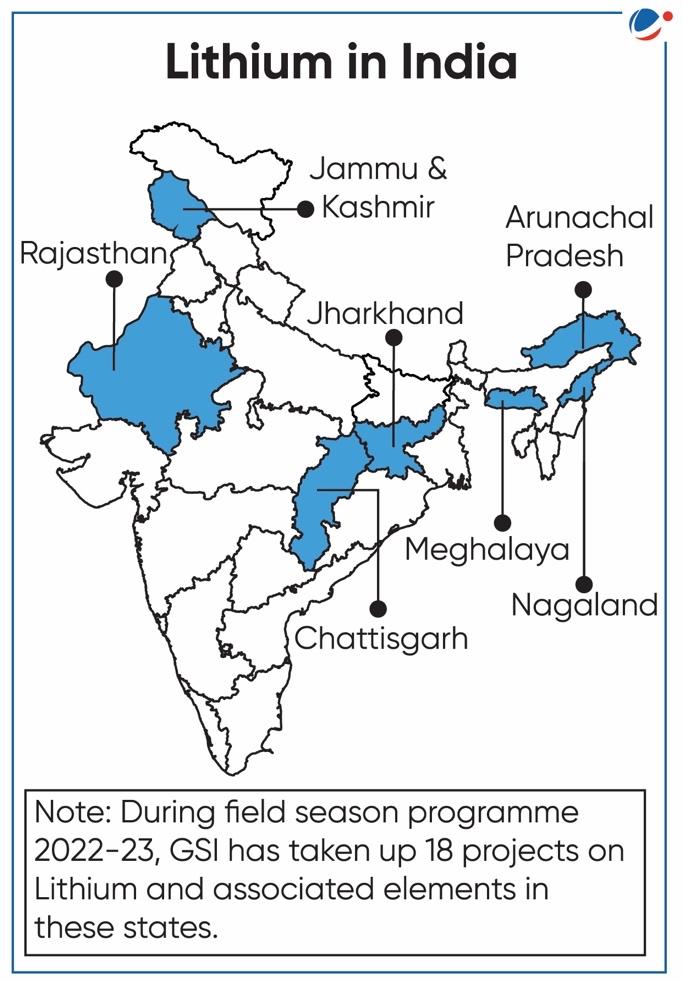Why in the News?
Recently, India and Argentina signed agreement for Lithium exploration & mining Project in Argentina.
More in the News
- The agreement was signed between Khanij Bidesh India Ltd (KABIL) and CAMYEN, a state-owned mining and energy company in the Argentina.
- The deal will be bringing in technical and operational experience for brine (or concentrated solution of saltwater) type lithium exploration for India.
Other Important initiatives for supply of Lithium in India
|
About Lithium
- Often called ‘white gold’, lithium is a soft, silvery-white alkali metal and has the lowest density of all metals. It reacts vigorously with water.
- Lithium metal is made into alloys with aluminium and magnesium, improving their strength and making them lighter.

Harnessing Lithium
- Lithium does not occur as the metal in nature, but is found combined in small amounts in nearly all igneous rocks and in the waters of many mineral springs.
- Spodumene, petalite, lepidolite, and amblygonite are important minerals containing lithium.
- The metal is produced by the electrolysis of molten lithium chloride and potassium chloride.
- Most lithium is currently produced in Chile, Bolivia, Argentina (Lithium Triangle), Australia and the USA.
- More detail about global distribution of lithium could be provided, I have added a map for it below article.
- Lithium in India
- Lithium have been identified as critical and strategic minerals under Mines and Mineral (Development and Regulation) (Amendment) Act 2023.
- Critical Minerals are elements that are building blocks of essential modern-day technologies, and are at risk of supply chain disruptions.
- Currently, India meets the lithium demand through 100% import mostly from (China and Hong Kong).
- Government is exploring reserves of Lithium for Indigenous production.
- Lithium have been identified as critical and strategic minerals under Mines and Mineral (Development and Regulation) (Amendment) Act 2023.


Challenges in harnessing Lithium reserves
- Long gestation period: Most of the lithium reserves being explored can take 6-8 years to bring the mines to full capacity commercial production.
- Extraction Challenge: Extraction of Lithium require specialized mining techniques.
- Environment pollution: Open-pit-mining, refining, and waste disposal can further pollute water and soil, affecting local inhabitants, agriculture, and biodiversity.
- Human rights issues: Displacement of indigenous community due to mining projects.
- Technical challenges: India has yet to gain experience
- Social challenges in Indian mining: e.g. Radicalism in Jammu and Kashmir
Way forward
- Diversify International collaboration: Collaborate with the US, Japan, Indonesia, and South Korea, Indo-Pacific Economic Framework, etc. to enhance the management of the global lithium supply chain and mitigate strategic vulnerabilities.
- Public-Private partnership: To speed up process of commercial production, need more involvement of private sector. Recent decision of allowing the auction of lithium mines is right step in this direction.
- Technology: Environment-friendly technology transfers from Australia regarding hard rock mineral extraction could be utilized in earthquake-prone regions like J&K and Uttarakhand.
- Involvement of local communities: Prioritize transparent communication and engagement with local communities to address concerns, providing jobs for locals etc.
- Capacity Building: skill, state of the art technology







